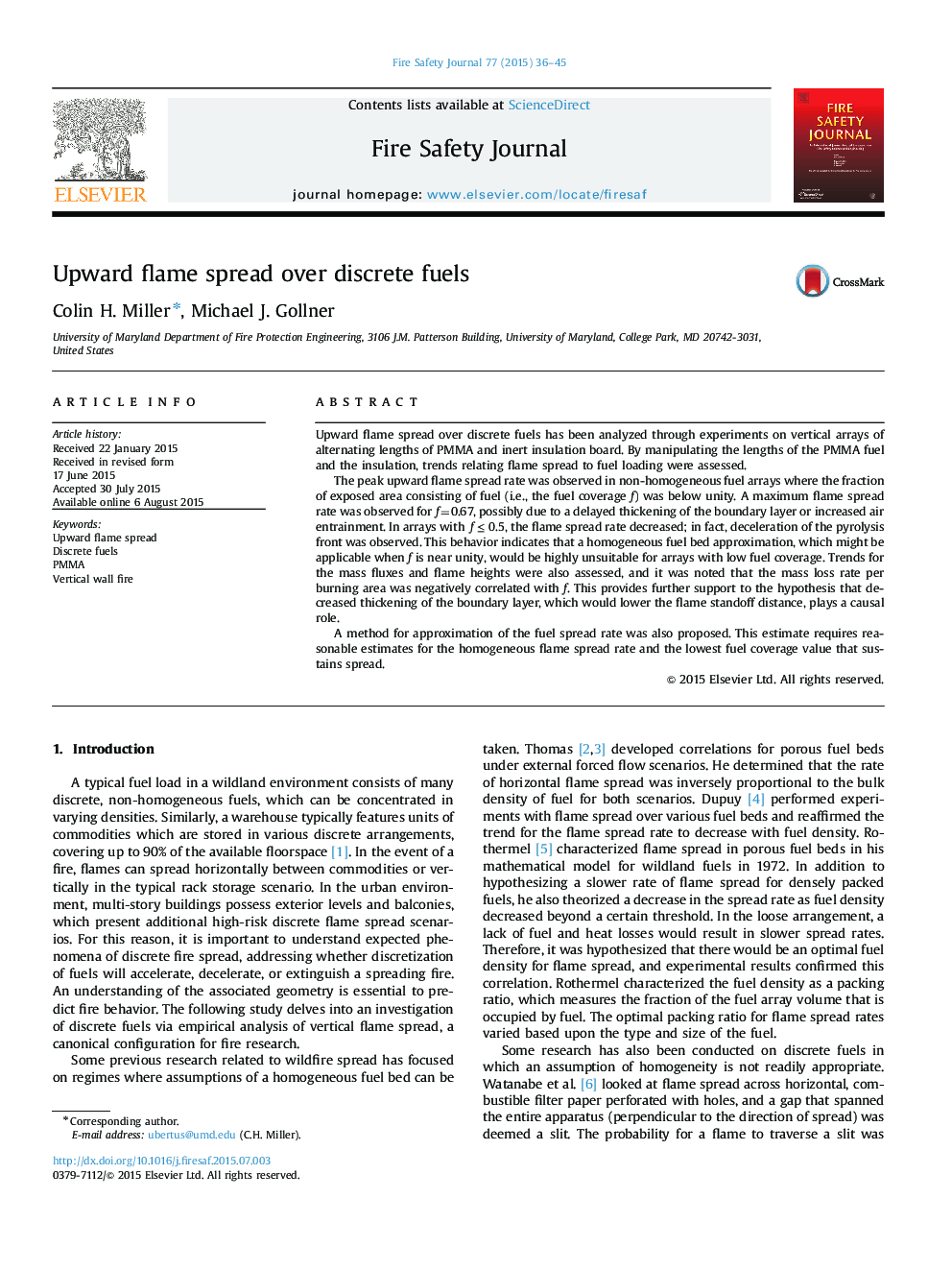| Article ID | Journal | Published Year | Pages | File Type |
|---|---|---|---|---|
| 269722 | Fire Safety Journal | 2015 | 10 Pages |
•We examined the flame spread rate over vertical fuel arrays of discrete PMMA fuel.•The flame spread rate peaked when the fuel coverage parameter was below unity.•We propose an approximation method for the spread rate at intermediate fuel percentages.•Divergent trends in flame spread acceleration are proposed as demarcations for assumptions of near-homogeneity.•The burning rate was negatively correlated with fuel coverage.
Upward flame spread over discrete fuels has been analyzed through experiments on vertical arrays of alternating lengths of PMMA and inert insulation board. By manipulating the lengths of the PMMA fuel and the insulation, trends relating flame spread to fuel loading were assessed.The peak upward flame spread rate was observed in non-homogeneous fuel arrays where the fraction of exposed area consisting of fuel (i.e., the fuel coverage f) was below unity. A maximum flame spread rate was observed for f =0.67, possibly due to a delayed thickening of the boundary layer or increased air entrainment. In arrays with f≤0.5f≤0.5, the flame spread rate decreased; in fact, deceleration of the pyrolysis front was observed. This behavior indicates that a homogeneous fuel bed approximation, which might be applicable when f is near unity, would be highly unsuitable for arrays with low fuel coverage. Trends for the mass fluxes and flame heights were also assessed, and it was noted that the mass loss rate per burning area was negatively correlated with f. This provides further support to the hypothesis that decreased thickening of the boundary layer, which would lower the flame standoff distance, plays a causal role.A method for approximation of the fuel spread rate was also proposed. This estimate requires reasonable estimates for the homogeneous flame spread rate and the lowest fuel coverage value that sustains spread.
